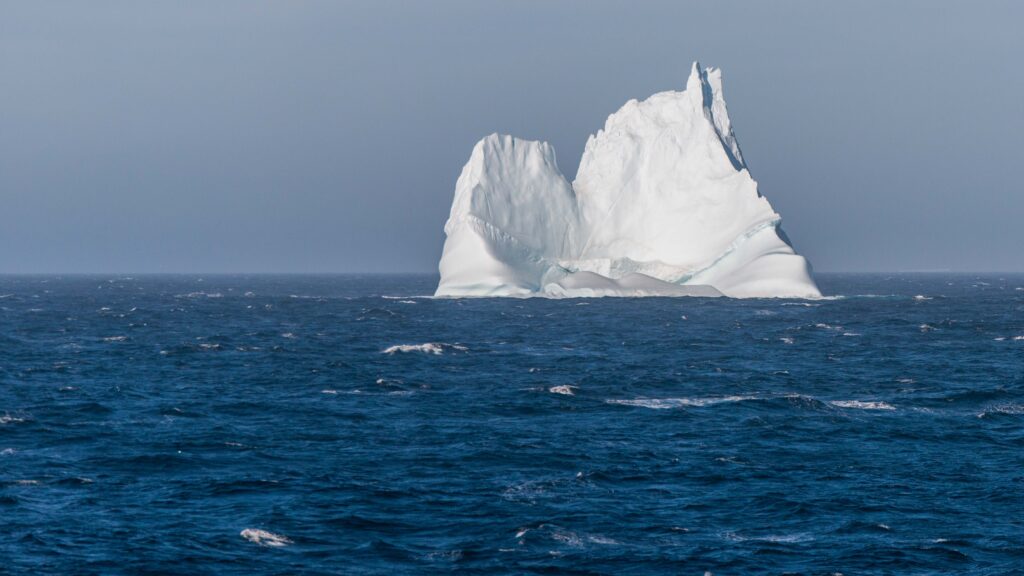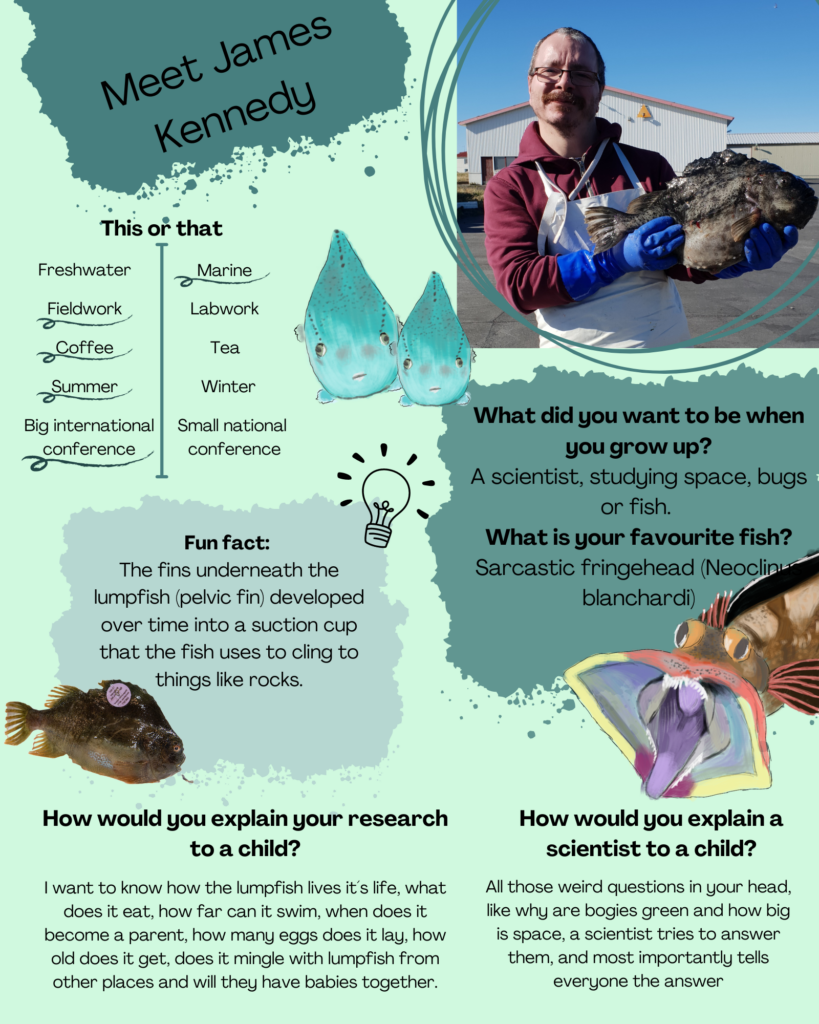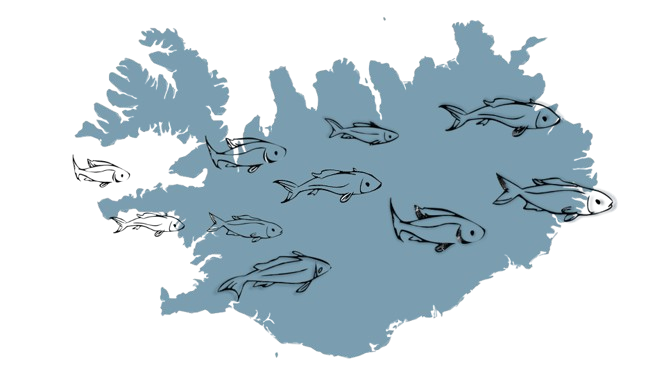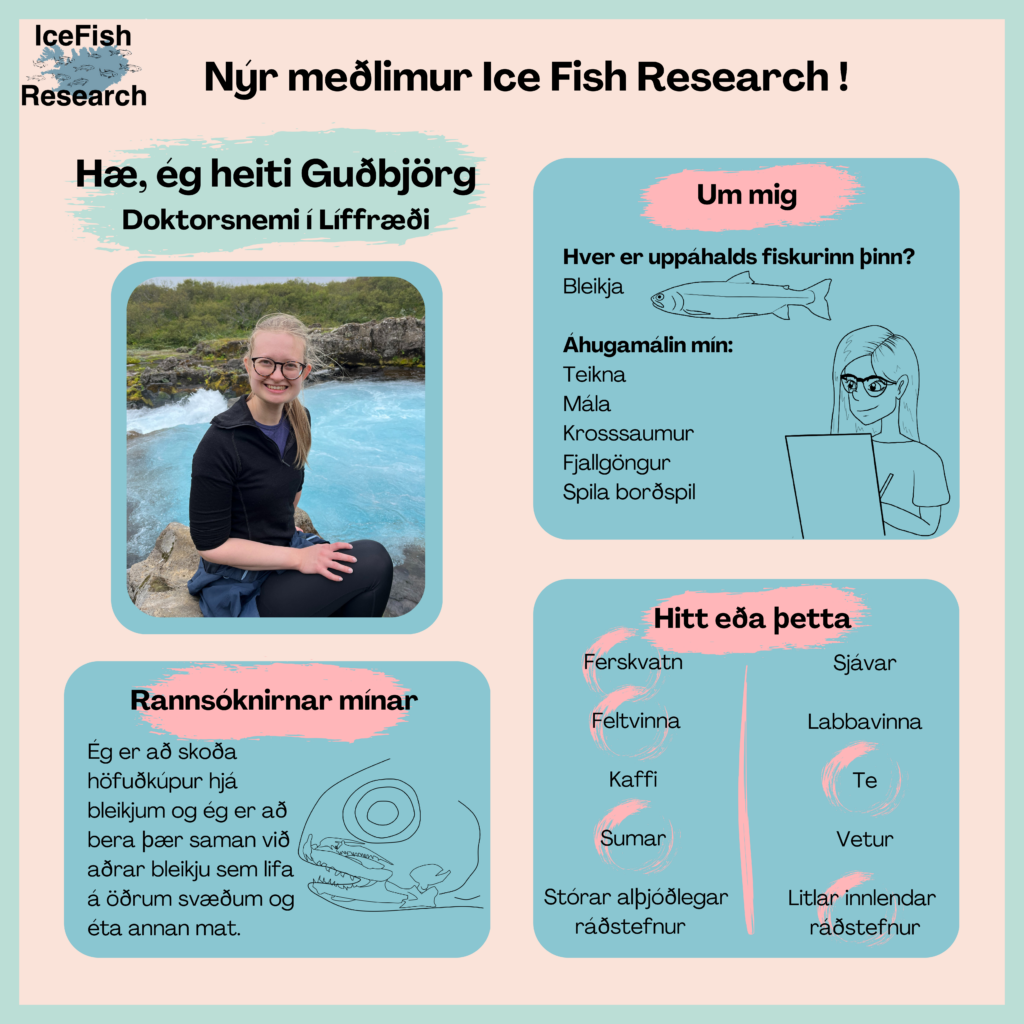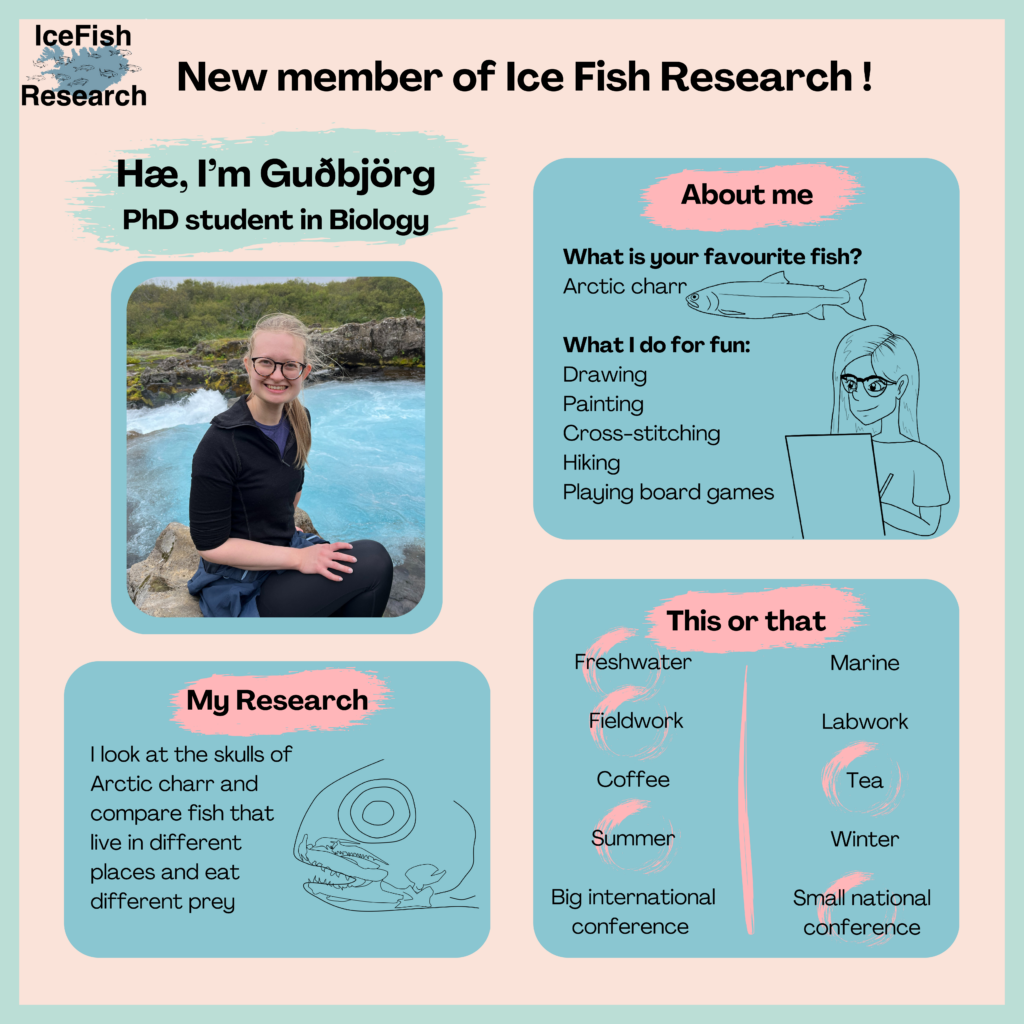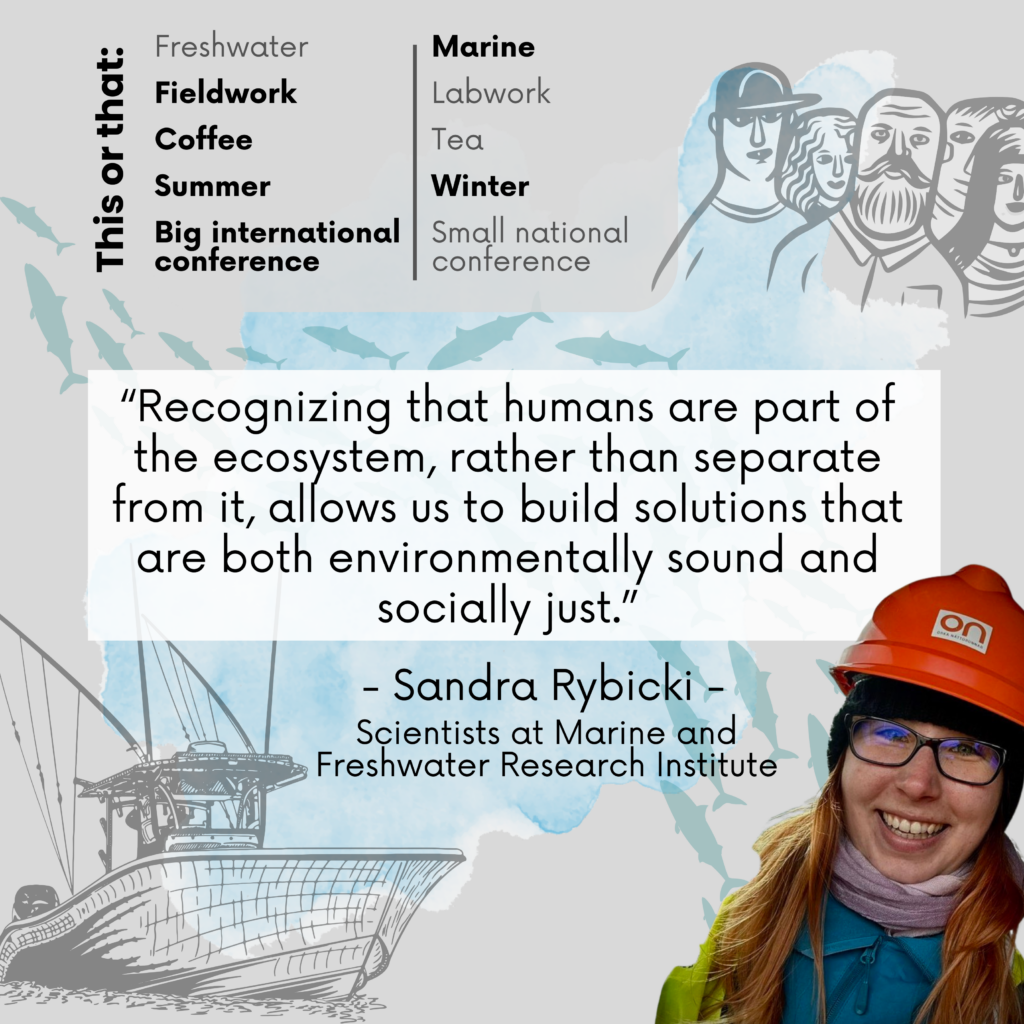James Kennedy, marine biologist at Hafró
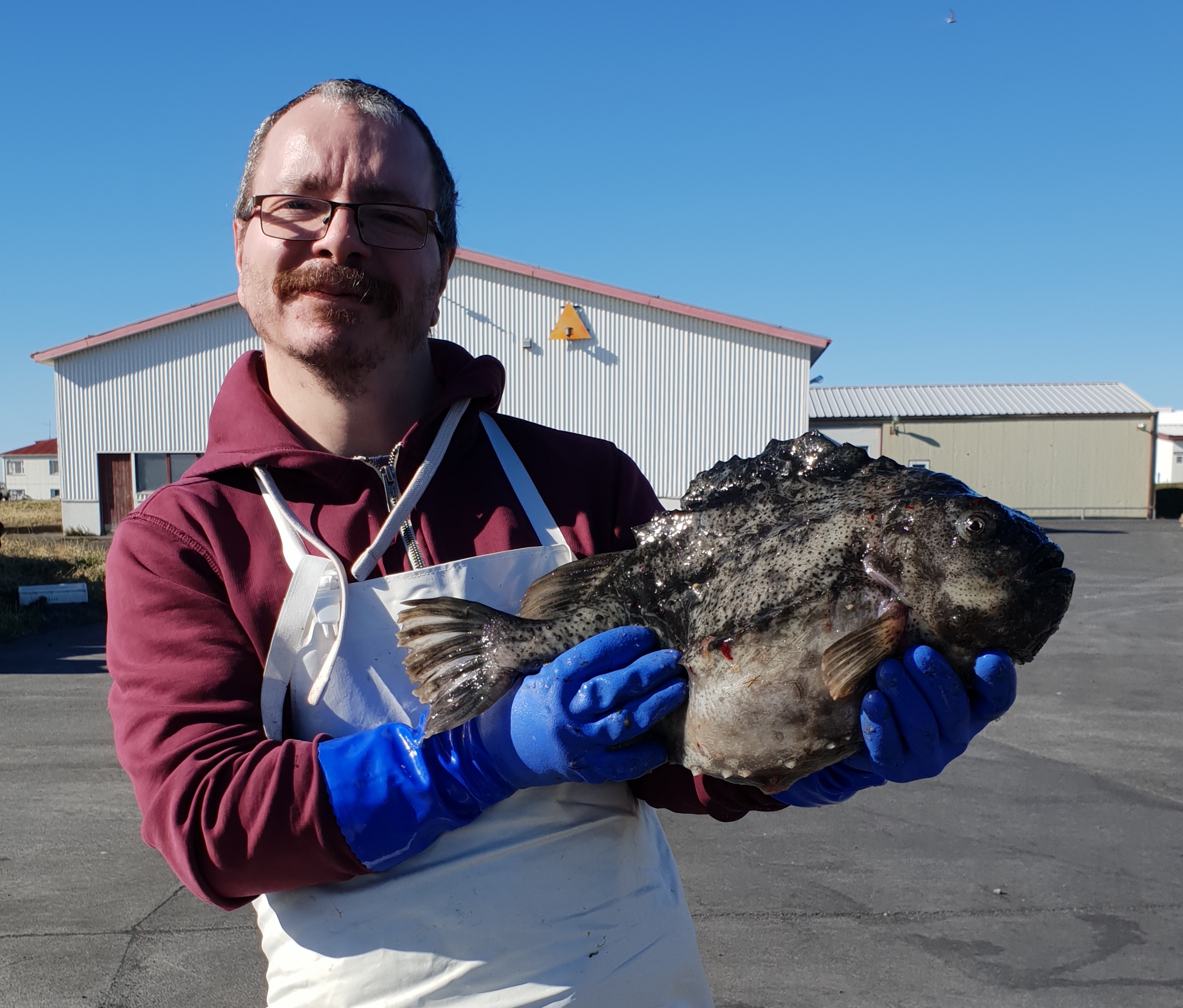
As a child James figured out, he wanted to be some sort of scientist studying space, bugs, or fish. While he was disappointed in having to choose just one of these fields, he eventually got hooked on marine biology after spending a lot of time sports fishing around the coast of Scotland with his dad. Now he is based in Ísafjörður, Iceland working in the pelagic division of the Marine and Freshwater Research Institute. Outside of his work, he is kept busy by his two kids and several aquariums but also enjoys finding time to go hiking, snowboarding, scuba diving and wildlife photography. You can check out his pictures at https://www.flickr.com/photos/kingcod.
Fun fact: The fins underneath the lumpfish (pelvic fin) developed over time into a suction cup that the fish uses to cling to things like rocks.
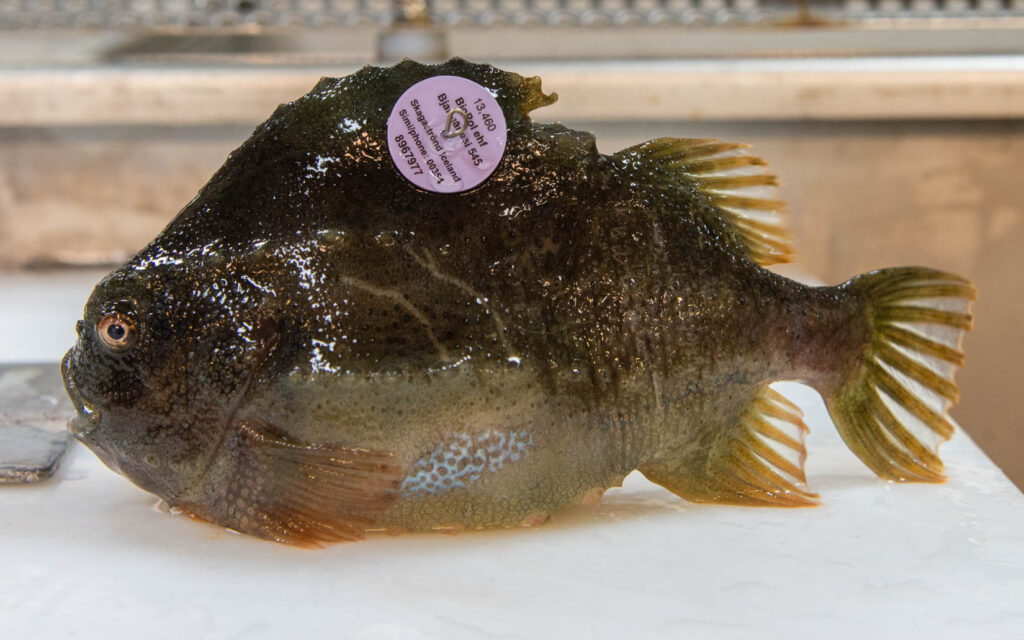
The one and only lumpfish
In his research at the Marine and Freshwater Institute, he focuses on the lumpfish and was inspired by the weirdness and uniqueness of this species that is fished for its roe. There are many questions that have not been answered yet about the ecology and biology of lumpfish such as e.g. how old it is when it spawns, how many times it spawns, where do they spend their time when they are not around the coast spawning and do the different populations around the north Atlantic mix? Basically, his goal is to find out how the lumpfish lives its life, what does it eat, how far can it swim, when does it become a parent, how many eggs does it lay, how old does it get, does it mingle with lumpfish from other places and will they have babies together. To do his research he spends about 3-4 weeks every year on a boat to catch samples and tag lumpfish. The rest of the year he spends in the lab or analyzing the collected data to add new pieces to the overall puzzle of lumpfish biology.
Advice from James
James’ favorite part of being a scientist is discovering new things and adding these new pieces of knowledge to the already existing picture. But he also enjoys that this picture is never ending as with every solved question and revealed secret, more questions come up. When asked what recommendations he has for aspiring scientists, he said to never give up if you believe being a scientist is what you want to do. He recommends researching the opportunities that are available, speak to scientists involved and to talk to any current or former students who have worked with them and, if you can, attend conferences and speak to other researchers working on similar topics. But he also points out that while science is everywhere, it can be difficult to break into academia where the jobs are limited, and it often comes down to being at the right place at the right time.
